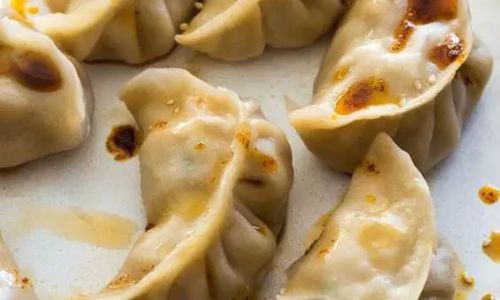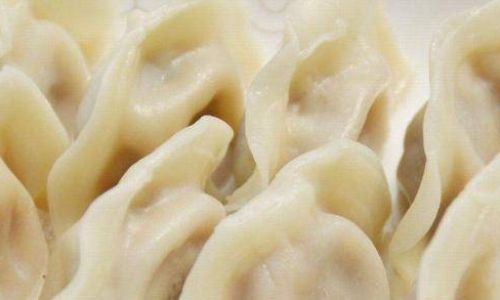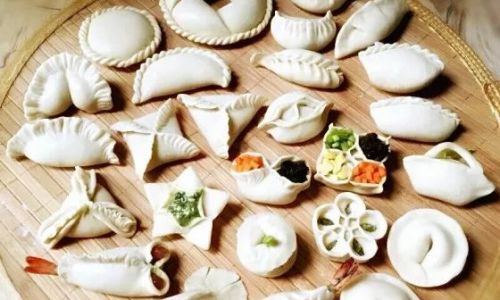Dumplings, known as jiaozi in Chinese cuisine, are a beloved culinary treasure that transcends borders and cultures. These delicate parcels of dough, filled with savory or sweet mixtures, hold a special place in global gastronomy, symbolizing unity, celebration, and the joy of shared meals. Whether enjoyed during festive occasions like Lunar New Year or as a comforting weeknight dinner, mastering the art of dumpling-making is a rewarding endeavor that connects cooks to centuries of tradition. This comprehensive guide will walk you through every step of the process, from preparing the filling to achieving the perfect golden-brown sear, ensuring your dumplings are both visually stunning and bursting with flavor.
Gathering Ingredients and Tools
Before diving into the culinary craft, assembling the right ingredients and tools is essential. For a classic pork and cabbage filling, you will need:

- Filling Ingredients: Ground pork (or your preferred protein), napa cabbage, ginger, garlic, scallions, soy sauce, sesame oil, rice vinegar, white pepper, and a pinch of salt.
- Dough Ingredients: All-purpose flour, water (preferably cold), and a optional pinch of salt for flavor.
- Tools: A large mixing bowl, a wooden spoon or chopsticks for mixing, a rolling pin, a sharp knife, a baking sheet lined with parchment paper, and a steamer basket or non-stick pan for cooking.
Preparing the Filling: Balancing Flavors and Textures
The heart of any dumpling lies in its filling. A harmonious blend of aromatics, vegetables, and protein creates a symphony of tastes that defines the dish.
Step 1: Preparing the Vegetables
Finely chop the napa cabbage and sprinkle it with salt. Let it sit for 10–15 minutes to draw out excess moisture, then squeeze the cabbage gently to remove liquid. This step prevents the filling from becoming soggy.
Step 2: Aromatics and Seasonings
Mince fresh ginger, garlic, and scallions. These ingredients add fragrance and depth. In a bowl, combine the ground pork, drained cabbage, aromatics, soy sauce, sesame oil, rice vinegar, and white pepper. Mix thoroughly until the ingredients are evenly distributed. For a lighter texture, avoid overmixing, as this can make the filling dense.
Step 3: Tasting and Adjusting
Before assembling, fry a small patty of the filling in a pan to test the seasoning. Adjust salt, pepper, or soy sauce as needed. This ensures the final dumplings are perfectly balanced.
Crafting the Dough: A Foundation of Flexibility
The dough is the canvas upon which your dumpling artistry unfolds. Achieving the right consistency requires patience and practice.
Step 1: Mixing the Dough
In a large bowl, combine 2 cups of all-purpose flour with a pinch of salt. Gradually add ¾ cup of cold water, stirring with chopsticks until a shaggy dough forms. Transfer to a clean surface and knead for 8–10 minutes until smooth and elastic. If the dough feels dry, sprinkle water; if sticky, dust with flour.
Step 2: Resting the Dough
Wrap the dough in plastic wrap or cover it with a damp cloth. Let it rest for 30–60 minutes. Resting relaxes the gluten, making the dough easier to roll and less prone to tearing.
Rolling Wrappers: Precision Meets Creativity
The wrapper’s thickness and shape influence the dumpling’s texture and cooking time. Consistency is key.
Step 1: Dividing the Dough
Unwrap the rested dough and knead it briefly. Roll it into a log and cut it into 12–15 equal pieces. Roll each piece into a ball, then flatten it into a disk.

Step 2: Rolling Technique
Using a small rolling pin, apply gentle pressure while rotating the disk. Roll from the edges toward the center, creating a thin, circular wrapper with a slightly thicker center. Aim for a diameter of 3–4 inches. Keep unused dough covered to prevent drying.
Assembling Dumplings: The Fold That Speaks Volumes
The way you fold dumplings not only seals in the filling but also adds aesthetic appeal. Master a few basic folds to elevate your presentation.
Step 1: Filling the Wrapper
Hold a wrapper in one hand and place a heaping teaspoon of filling in the center. Avoid overfilling, as this can cause bursting during cooking.
Step 2: Basic Crescent Fold
Dip a finger in water and moisten the wrapper’s edge. Fold the wrapper in half, pinching the edges together to seal. Create pleats on one side by folding small segments of the edge toward the center, pressing firmly to adhere.
Step 3: Pleated Edge Technique
For a decorative touch, create multiple small pleats along one side while sealing. This method requires practice but results in an elegant, ridged edge.
Step 4: Placing on a Tray
Arrange assembled dumplings on a parchment-lined baking sheet, ensuring they do not touch. This prevents sticking and maintains their shape.
Cooking Methods: From Boiling to Pan-Frying
Dumplings can be cooked in various ways, each imparting a unique texture and flavor.
Boiling (Shui Jiao)
Bring a large pot of water to a rolling boil. Gently add dumplings, stirring to prevent sticking. Cook for 6–8 minutes until they float to the surface. For added texture, add a cup of cold water mid-boil and repeat once more.
Pan-Frying (Guo Tie/Potstickers)
Heat a non-stick pan over medium heat. Add a tablespoon of oil and arrange dumplings in a single layer. Fry until the bottoms are golden (2–3 minutes). Carefully pour in ¼ cup of water and cover immediately. Steam for 6–8 minutes until the water evaporates. Uncover and fry until crispy.

Steaming (Zheng Jiao)
Line a steamer basket with cabbage leaves or parchment. Arrange dumplings without touching and steam for 12–15 minutes over boiling water.
Serving and Pairing: Elevating the Experience
Dumplings are often paired with dipping sauces and complementary sides to enhance their flavor.
Dipping Sauces
- Classic Soy-Vinegar Sauce: Mix soy sauce, rice vinegar, sesame oil, and chili oil.
- Spicy Sichuan Sauce: Combine minced garlic, chili flakes, black vinegar, and a touch of sugar.
Garnishes and Sides
Sprinkle dumplings with chopped scallions, sesame seeds, or cilantro. Serve alongside pickled vegetables, cucumber salad, or a light broth for a balanced meal.
Troubleshooting and Tips for Success
Even seasoned cooks encounter challenges. Here’s how to overcome common pitfalls:
- Tough Dough: Overkneading or insufficient water. Add a teaspoon of water and knead gently.
- Soggy Bottoms (Pan-Frying): Use a well-heated pan and ensure the water fully evaporates before uncovering.
- Burst Dumplings: Overfilled or under-sealed. Practice sealing techniques and reduce filling quantity.
Exploring Variations: From Vegetarian to Exotic
Dumplings are incredibly versatile. Experiment with fillings like:
- Vegetarian: Spinach, tofu, and mushrooms.
- Seafood: Shrimp and chive.
- Sweet: Red bean paste or mashed sweet potato.
Conclusion: The Joy of Dumpling-Making
Crafting dumplings is more than a culinary task—it’s a meditation on tradition, creativity, and connection. Each fold tells a story, and every shared plate bridges generations and cultures. Whether you’re a novice or a seasoned cook, the process invites patience, experimentation, and a celebration of flavors. So gather your ingredients, roll up your sleeves, and embark on a journey to create dumplings that are as delightful to make as they are to savor.





0 comments